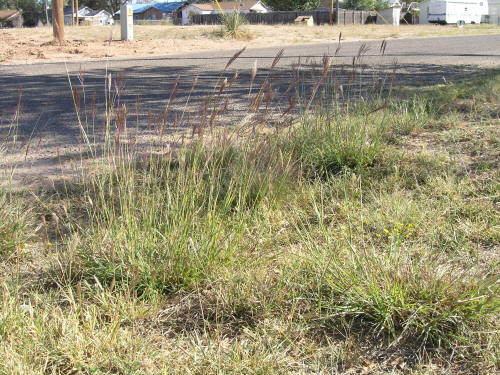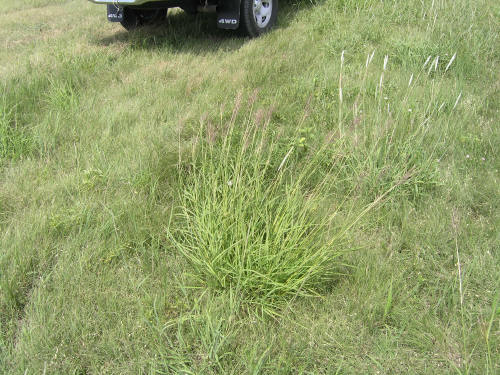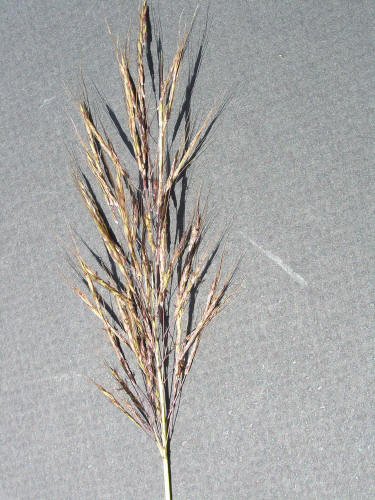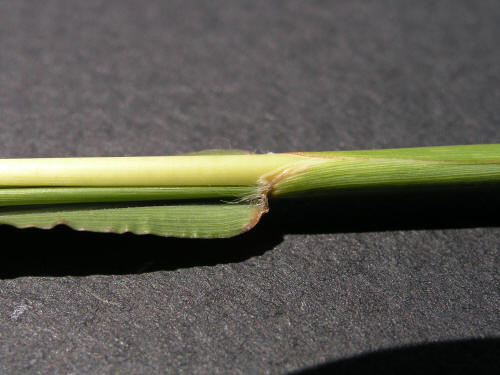Caucasian Bluestem
Caucasian Bluestem, Old-World Bluestem
Bothriochloa bladhii (Retz.) S.T. Blake
Grass Family (Poaceae)

▲ ▼ mature, flowering plants

▲ ▼ mature, flowering plants


▲ inflorescence

▲ leaf collar region and fringed ligule
Caucasian Bluestem, Old-World Bluestem:
- Warm-season, clumping perennial grass native to Australia and southeast Asia that has been widely planted as a forage/hay crop along with native warm-season grasses
- Grows 1-3 feet tall, with slender blue-green leaves with thicker midveins--leaves,
stems tend to not be completely upright
- Very similar to yellow bluestem, except Caucasian bluestem has purplish nodes on the flowering stems, and may have short hairs at the nodes
- Yellow bluestem also grows a little larger and has slender yellow-green leaves and more lax (decumbent) stems
- Inflorescences are slender digitate to pyramidal panicles, with silvery, purplish-red
or brownish-purple spikelets along inflorescence branches--lateral inflorescence branches
are not as long as the main central inflorescence branch
- Yellow bluestem has lateral inflorescence branches that are longer than the central inflorescence branch
- Outcompetes native warm-season grasses when grown together, and does not provide as much forage/nutritional value as native warm-season grasses
- Altering soil carbon-to-nitrogen ratio downgrades soil quality over time
- Very difficult to control in prairies, rangeland where native warm-season grasses are also present